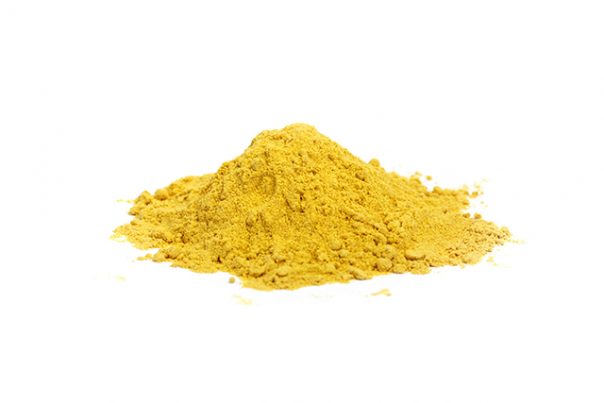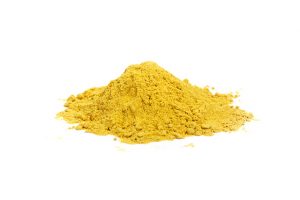
Trifluralin — toxicity, side effects, diseases and environmental impacts
Thursday, November 23, 2017 by Rita Winters
http://www.naturalpedia.com/trifluralin-toxicity-side-effects-diseases-and-environmental-impacts.html

Trifluralin is an herbicide used to control weeds and unwanted grass growths. It is a yellow-orange crystalline solid that can slightly dissolve in water. By stopping a plant’s miosis, trifluralin inhibits a plant’s roots’ growth, thus curbing weed germination. Trifluralin is mostly used to get rid of weeds in cotton fields, soybean, fruit, and other vegetable fields. Some formulations can be used at home for controlling weeds and unwanted plants in the garden.
While information on trifluralin is scant, there are some reports showing that trifluralin has an acute toxicity level. It is fatal to aquatic lifeforms, and was banned from the European Union in March 2008.
Products that contain trifluralin may have other names and synonyms including 1582-09-8; 1893555; 2,6-Dinitro-N,N-dipropyl-4-(trifluormethyl)anilin; 2,6-Dinitro-N,N-dipropyl-4-(trifluoromethyl)aniline; 2,6-Dinitro-N,N-dipropyl-4-(trifluoromethyl)benzenamine; 216-428-8 [EINECS]; a,a,a-Trifluoro-2,6-dinitro-N,N-dipropyl-p-toluidine; Benzenamine, 2,6-dinitro-N,N-dipropyl-4-(trifluoromethyl)-; N,N-Dipropyl-2,6-dinitro-4-trifluormethylanilin; trifluraline; Elancolan; Sinflouran; and Super-Treflan.

List of known side effects
Laboratory tests show that trifluralin can cause some negative side effects. Skin absorption is likely and can cause allergic skin reactions, redness, and rashes. Inhalation of trifluralin or its gases (produced from burning) may result in irritation of the lining of the mouth, nose, and throat. This toxic chemical must not be ingested as it can cause numerous dangers to the human body, including decreased weight gain, changes in hematological parameters, nausea, and severe discomfort.
Trifluralin is not yet known to be carcinogenic to humans, but is, however, carcinogenic to laboratory animals such as rats and rabbits. This toxic chemical has the same properties and chemical make-up as ethalfluralin, which is a known carcinogen to humans. That being said, there is a strong possibility that trifluralin may also be carcinogenic in humans. Trifluralin is fatal to aquatic life forms.
Body systems affected by trifluralin
Like most other chemical pesticides and herbicides, prolonged exposure or exposure to huge amounts of trifluralin may cause severe damage to the liver and kidneys.
Items that may contain trifluralin
Food items that may contain trifluralin are broccoli, cabbage, onions, other leafy green vegetables, beans, tomatoes, potatoes, wheat, soybeans, sugar beets, and sugar cane. Trifluralin may also be used on animal feed crops like corn and wheat. The U.S.’ trifluralin usage consists of 19 percent on cotton and 64 percent on soybeans.
Trifluralin may also be used on oilseed rape (rapeseed), sunflowers, wetch, linseed, peanuts, and chicory.
Places that may have trifluralin residues include orchards, vineyards, commercial farms, parks or other recreational lawns, golf courses, places with ornamental plants, and residential lawns.
How to avoid trifluralin
To avoid this toxic chemical, avoid using chemical pesticides on your garden and crops. Avoid places that may contain large amounts of residual trifluralin, as mentioned above. When handling trifluralin as part of your occupation, make sure to practice correct preventive measures, including wearing protective gear. These include protective gloves, boots, chemical suit, and a full-head respirator.
Because it is likely to be carcinogenic to humans, exposure to trifluralin should be as minimal as possible.
When exposed to trifluralin, make sure to wash all exposed skin with soap and water. Eyes that are contaminated by the chemical should be washed under clean water thoroughly. Inhalation and ingestion cases must be attended to by medical personnel as soon as possible.
Where to learn more
- Ninety percent of U.S. tobacco is GMO; hey smokers, you’re smoking pesticide!
- Poison.news
- Chemicals.news
- Toxins.news
- Pesticides.news
Summary
Prolonged exposure to trifluralin can cause liver and kidney problems. Trifluralin is likely to be carcinogenic to humans. Trifluralin is fatal to aquatic life forms.
Sources include:
Tagged Under: Tags: trifluralin





